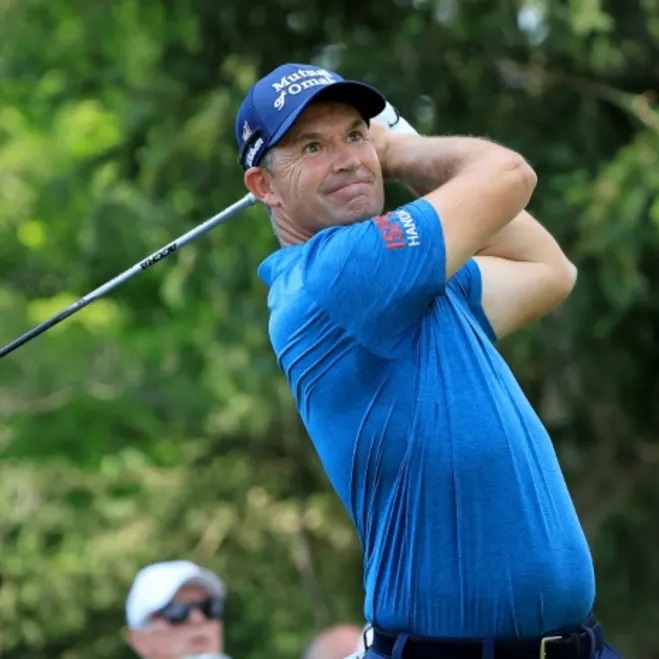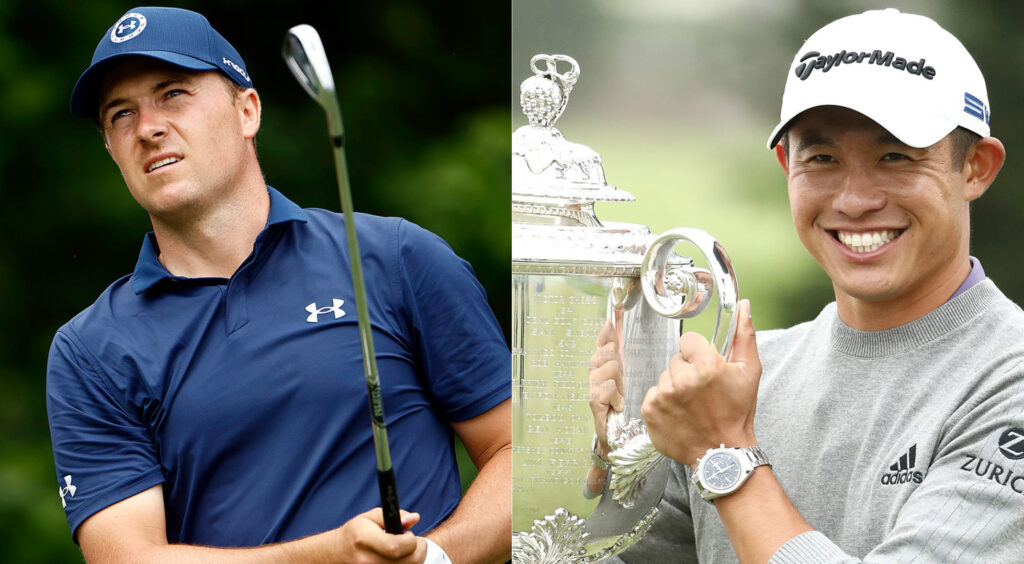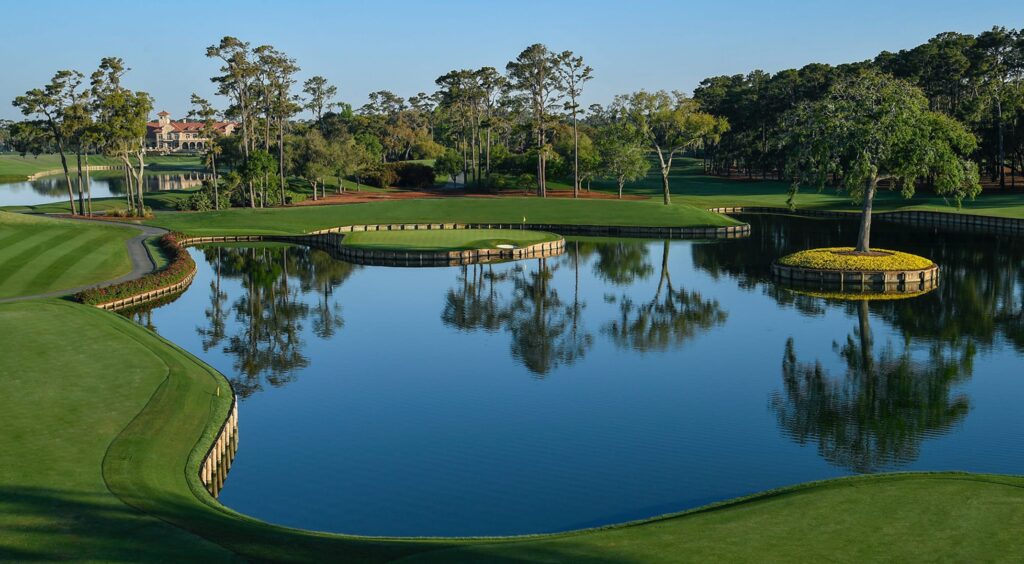
https://www.golfdigest.com/
https://www.golfchannel.com/
Number 10: 2012 Open Championship– Ernie Els
Ernie Els was 42 years old back in 2012, and it had been ten years since he won The Open in 2002. He had missed the cut in 3 of the 4 major championships in 2011, with only a single Top 10 finish on the PGA Tour in 21 starts. And although Els recorded 5 consecutive Top-10’s at Augusta National from 2000 through 2005 (including 2 runner-up finishes), he had dropped out of the top 50 in the World Golf Rankings, and The Masters Committee declined to offer him a special exemption—so he missed the Masters for the first time in 17 years.
As the sting of missing The Masters receded, Ernie’s game began to get in gear with a runner-up at the Zurich Classic of New Orleans in late April, and he started looking very much like the Els of old with a Top 10 at the U.S. Open in June at the Olympic Club.
The 2012 Open was played at Royal Lytham & St. Annes Golf Club, and Ernie got off to a solid start with a 67 in the first round—but Adam Scott fired a brilliant 64 and he was 3 shots off the lead. Els continued to play well in the second and third rounds to stand at 5 under, but Adam was playing even better, and as the final round got under way on Sunday Scott had opened up a 6-shot lead.
It didn’t get any better for Ernie through the first 9 on Sunday as he posted a 2 over 37, including a bogey at the ninth, and Scott’s lead remained at 6 shots going to the back—with seemingly little hope that Els would lift the Claret Jug for a second time.
Although Ernie got hot and birdied 3 out of the first 5 holes on the back nine, he still trailed Scott by 4 with only 4 holes to play. But anything can happen down the stretch at an Open Championship.
Scott struggled on the closing holes, finishing with 4 consecutive bogies to finish at 6 under. Els made par at 15, 16 and 17, and then hammered a perfect tee shot down the middle on the last. After a crisp wedge that came down 20 feet from the pin, Ernie drilled the putt for birdie to shoot 31 on the back and a 68, posting 7 under to become the 2012 Champion Golfer in one of the greatest comeback victories of all time.

Number 9: 1995 PGA Championship– Steve Elkington
Seventeen years before his dramatic comeback victory at The Open, Ernie Els began the final round of the 1995 PGA Championship at Riviera Country Club with a 3 shot lead over Mark O’Meara and Jeff Maggert, 5 shots over Colin Montgomerie, and a 6 shot margin over Steve Elkington and Craig Stadler.
Ernie was at the top of his game in 1995, having recorded 4 major Top-10’s and a U.S. Open title between 1992 and 1994. The only player among the leaders with a major victory was Craig Stadler, and his win at The Masters had come almost twenty years earlier in 1976—so it seemed inevitable that Els would raise the Wanamaker Trophy when play concluded on Sunday.
Steve Elkington, however, was on a mission. With perhaps the greatest swing of all-time, Elk was at the top of his game with a T5 at Augusta in April and a T6 at The Open Championship in July. And although he was again battling the severe sinus problems that plagued him throughout his career, Elkington knocked down stick after stick on Sunday to post a magnificent final round 64—overcoming a 6 shot deficit to finish in a tie with Montgomerie at 17 under par.
When his birdie putt dropped on the first playoff hole, Elkington had won the PGA Championship—and completed one of the greatest comebacks in history.

Number 8: 2013 Open Championship– Phil Mickelson
Phil had suffered yet another devastating U.S. Open loss at Marion in June, his sixth runner-up finish at the championship he so much wanted to win, so it seemed unlikely that Lefty could bounce back and make a serious run at the Claret Jug in July.
Mickelson, however, continued to push by sharpening his links game while winning the Scottish Open in the week leading up to The Open Championship at Muirfield.
While Phil got off to a good start with a 69 in the first round, he disappeared from the leader board completely with a second round 74—so it seemed highly unlikely that lefty would make The Open his 5th major championship. Muirfield was proving a tough test, however, and Phil fought his way back with a solid 72 in the third round, but still found himself 5 shots off the pace set by leader Lee Westwood heading into the final round.
As the wind started to blow on Sunday, Phil uncharacteristically went to his 3 wood and fashioned a masterful closing round 66 to finish at 3 under par—one of the greatest performances of his illustrious career. And when Westwood faltered with a closing 75, and the other players at the top of the leaderboard succumbed to the weather, Phil won going away with a 3 shot victory in one of the most memorable comebacks in major championship history.

Number 7: 1996 Masters– Nick Faldo
In the fifteen Masters championships Norman had played heading to August National in 1996, Greg had recorded 2 runner-up finishes, 2 third place finishes, 2 top-5’s and a top 10. And when he opened with a dominating 63 in the first round, it appeared that 1996 would be the year that Norman would slip the green jacket over his shoulders at last.
Norman continued to play solid golf on Friday and Saturday, posting rounds of 69 and 71 for a 54-hole total of 13 under and a commanding 6-shot lead over Nick Faldo going to Sunday.
With his customary laser focus, Faldo applied the pressure in the final round by posting 2 under on the front nine as Norman began to disintegrate with 3 bogeys and a lone birdie—a 4 shot swing that left Faldo only 2 behind going to the back nine.
While Norman imploded completely with 41 on the back, Faldo kept his foot firmly on the gas with a 33 on the closing nine, a final round 67, and a 5 shot victory. Most remember the 1996 Masters for Norman’s colossal collapse, but Faldo’s magnificent final round was stunning—and one of the all-time comebacks in major championship history.

Number 6: 2007 Open Championship– Padraig Harrington
Sergio Garcia fired a sizzling opening round 65 in pursuit of his first major championship at Carnoustie Golf Links in the 2007 Open Championship, jumping out to a 2 shot lead over Irishman Paul McGinley. At 27 years old, Garcia had recorded 12 major Top-10’s in his career without a win, and it was looking like this would be the week when he finally broke through.
Sergio increased his lead through 54 holes with rounds of 71 and 68 on Friday and Saturday as he climbed to 9 under par going into the final round on Sunday—and it seemed he would just need to hold off Steve Stricker, who had pulled within 3 shots with a brilliant 64 on Saturday.
With all eyes focused on Garcia and Stricker, another Irishman, Padraig Harrington, who had begun the day six shots back at 3 under, slowly began creeping up the leaderboard with birdies on the 3rd, 6th and 9th holes. Meanwhile, Garcia began to stumble with 3 bogeys and a birdie on the front, so his lead had shriveled to a single shot over Harrington.
When Padraig made birdie at 11 and then eagle at 14, he moved to 9 under par and the outright lead. At the 18th hole, however, it suddenly appeared that Padraig’s gutsy charge had come to an end when his approach found the water—resulting in a disastrous double that dropped him once again to a shot back of Sergio’s lead.
Garcia, however, was unable to make par at 18, and his bogey gave Harrington a reprieve as they both finished at 7 under par and headed to a 4-hole playoff.
Padraig made the most of it, playing the extra holes in even par to defeat Sergio by a shot— completing.one of the most exciting finishes (and greatest comebacks) in major championship history.

Number 5: 1989 PGA Championship– Payne Stewart
Payne Stewart opened the 1989 PGA Championship at Kemper Lakes Golf Club with a 74, 8 shots behind Mike Reid, who fired a flawless round of 66. And although Stewart came back strong in the second round with a 66 of his own, he picked up only a single shot as Reid followed up with another great round of 67.
Reid began to back up a bit with a 70 in the third round on Saturday, but again Stewart picked up only one shot while recording a solid round of 69, so Payne found himself six shots back of the lead going into Sunday. On top of that, there were four major champions on the leaderboard between he and Reid (Craig Stadler, Seve Ballesteros, Ian Woosnam, and reigning back-to-back U.S. Open champion Curtis Strange).
Having recorded 10 Top-10’s in his previous 17 major championships and coming up empty, Stewart refused to be denied once again. After playing the front nine at even par, Payne birdied 5 holes on the back without a bogey for 67, a tounamnet toal of -12, the first of his 3 major championship wins, and a comeback victory that continues to bring a smile to the face of everyone who witnessed his magnificent performance all those years ago.

Number 4: 1978 PGA Championship– John Mahaffey
John Mahaffey had a solid career on the PGA Tour with 10 wins, but his performance at the 1978 PGA Championship would become his defining moment. Opening with a first round 75 at historic Oakmont Country Club, Mahaffey began the final 54 holes in a very deep hole—eight shots behind Hall of Famer Tom Watson, who had posted a 67.
Mahaffey began to claw his way back into contention with a 67 on Friday, but still found himself six shots behind going into the weekend. And although he backed it up with an outstanding round of 68 on Saturday, he actually lost ground to Watson, who fired a third round 67 and stood at -10 heading into Sunday, 7 shots clear of Mahaffey who was at 3 under par.
But when Tom faltered on Sunday with a 73, Mahaffey maximized his opportunity by carding a magnificent 66, erasing a 7 shot deficit to force a 3-man playoff with Watson and Jerry Pate.
When Mahaffey birdied the second playoff hole, he claimed the Wanamaker Trophy and recorded the biggest Sunday comeback in PGA Championship history.

Number 3: 1978 Masters– Gary Player
Gary Player had already won at Augusta twice before with 11 Top-10’s when play got under way at The Masters in 1978. With even par rounds of 72 on Thursday and Friday, Player appeared to be treading water while waiting to make a move, and trailed the leaders (Rod Funseth and Lee Trevino) by 5 shots going to the weekend.
Although Gary kicked it up a notch with a 69 on Saturday, it seemed he had waited just a bit too long as Hubert Green fired a 65 in the third round for a 54-hole total of -10, opening up a 3 shot lead on the field, and a whopping 7 shot margin over Player.
As Sunday’s final round began to heat up, Player crept closer to Green with 3 birdies and a bogey on the front, but Hubert was playing solidly at even par and Gary was still 5 shots behind him going to the back nine.
Since it appeared that Green would not be giving anything away, and Tom Watson had made eagle at 13 to join the lead at 10 under, Player decided it was time to light the afterburner.
With 6 birdies on the back (7 in his last 10 holes), Player charged to the clubhouse with a 30 on the back nine for a final round 64 and a 72-hole total of 11 under par—a shot ahead of the field, and biggest comeback ever at Augusta National.

https://www.golfdigest.com/
Number 2: 1973 U.S. Open– Johnny Miller
The 54-hole leaderboard at the 1973 U.S. Open included many of the all-time greats in the history of golf, including Jack Nicklaus and Gary Player (tied for ninth, 4 shots back at +1), Lee Trevino and Bob Charles (tied for 6th, 2 shots back at -1), and Tom Weiskopf (alone in 5th, 1 shot back at -2). The co-leaders at -3, included Arnold Palmer and Julius Boros, as well as two unheralded tour pros–Jerry Heard and John Schlee.
With so many great players at the top of the leaderboard, it would be pretty much impossible for anyone more than four shots back to win the championship, since even if all of the co-leaders were to falter, one of the other legends who were lurking in the wings was likely to post a low score.
Johnny Miller was seven shots behind the leaders at +4 when play began on Sunday, and to win the championship he would have to go extremely low. Making it even more improbable, the ’73 Open was being played at famed Oakmont Country Club, one of the toughest U.S. Open venues in the rotation.
But Miller did exactly that, firing laser-like approach shots to record 9 birdies on his way to a record setting 63 and the U.S. Open Championship trophy in one of finest rounds ever played, and one of the greatest comebacks in history.

https://www.golfchannel.com/
Number 1: 1999 Open Championship– Paul Lawrie
What most remember when thinking back on the 1999 Open Championship at Carnoustie is Jean Van de Velde’s disastrous triple bogey on the 18th hole—and that was certainly a difficult and painful moment for the Frenchman who fought so hard throughout the week.
What is less often talked about is the fantastic final round played by Paul Lawrie. Carnoustie, one of the most difficult courses in the Open Championship rotation, had played particularly tough all week with no one in the field under par when play began on Sunday.
Lawrie began the day in a tie for 14th place at +10, ten shots behind Van de Velde. In one of the greatest rounds ever recorded at a major on Sunday, Lawrie navigated the yawning pot bunkers and gnarly rough through gusting winds to post a magnificent four under round of 67. In the entire field, only 3 other players were able to break 70 (Davis Love, Scott Verplank, and Steve Allen—who each shot 69).
When Lawrie defeated Van de Velde and Justin Leonard in a playoff to claim the Claret Jug, his charge from ten shots off the lead became the biggest Sunday comeback in the history of major championship golf.









